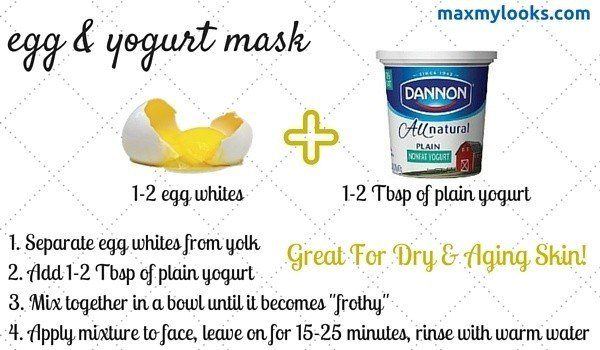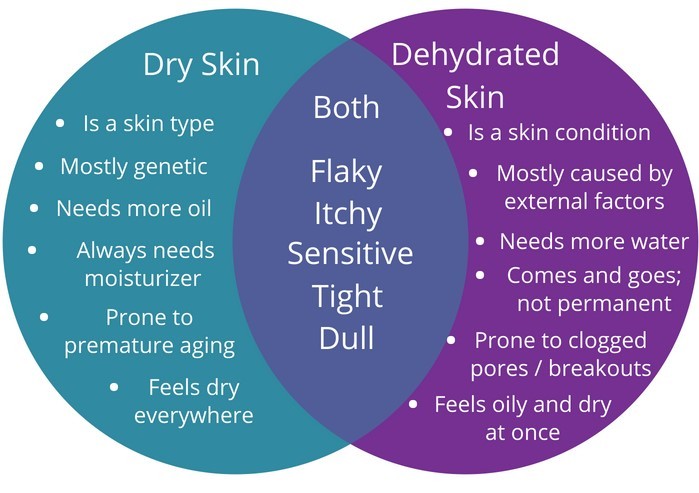Winter brings the holidays and celebrations. It also brings the time to make seasonal changes to your skincare routine.
For this, you can blame the weather. The air is dry and humidity is low. Harsh winds and cold temperatures means your skin takes a beating and is also dry, possibly dehydrated, and begging for some relief.
Thankfully, there are several things you can do to keep your skin glowing, healthy, and feeling fantastic even when the mercury dips.
Just follow these skincare tips for the winter!
Tip #1 – Keep Using Sunscreen
Just because the sun isn’t as strong, it doesn’t mean your skin suddenly becomes invincible to damage from UVA and UVB radiation!
As a reminder, UVA radiation is the type responsible for premature aging. It causes wrinkles and can pass through glass. UVB radiation is the type that causes burns.
These rays reflect off snow and permeate through clouds easily enough even on the most dreary days.
Any part of your skin that’s exposed when outdoors will accumulate sun damage over time. Even if you don’t get sunburned or see the immediate effects. This means eventually (if not already) you’ll start dealing with…
- Discoloration
- Wrinkles
- Fine lines
- Crow’s feet around the eyes
- Saggy skin in general
Unless you remain diligent and use sunscreen!
Layer it over your moisturizer or use a tinted moisturizer with SPF protection.
Read more: How To Apply Sunscreen The Right Way
Tip #2 – Avoid Hot Water
Everyone likes taking long, hot, steamy showers in the winter.
Unfortunately, hot water destroys your skin’s protective moisture barrier, stripping it of its natural oils. This leads to irritation, redness, itchiness, and taut, inelastic skin.
It can also make dandruff and dry scalp conditions worse.
Think of it like this. When you’re washing greasy utensils, hot water is more useful for removing stains than cold water because it dislodges oil more easily. The same thing happens to your skin when it becomes dry and flaky after splashing it with hot water.
The fix: Do cold water if you can manage it. It’s good for your skin because it seals pores and minimizes the chance of breakouts. If not, use lukewarm water somewhere in between too hot and too cold. Also, limit the amount of time you spend under the water if using warm. This is good for the environment, your wallet, and your skin!
Tip #3 – Use The Right Moisturizer For Your Skin Type
Winter is the perfect time to switch that lightweight moisturizer for something a little heavier.
But this depends on your skin type. Normal and dry skin types can get away with and even benefit from using a rich, creamy moisturizer. But if your skin is oily year-round, you should keep it light to avoid clogged pores and a greasy looking face.
Consider applying a hydrating serum with antioxidants before your moisturizer. Serums are high concentrations of specific ingredients and they can help keep your skin bouncy and alive even on the darkest and coldest of winter days. We like the benefits of hyaluronic acid which has anti-aging as well as moisturizing properties.
After the moisturizer, consider an occlusive like petroleum jelly to seal in moisture and create an artificial barrier. Sometimes humectants like hyaluronic acid and glycerin won’t work as effectively on their own if there isn’t enough moisture in the air for them to attract to your skin.
At night before bed, a rich PM moisturizer or a rejuvenating eye cream can help especially if you have mature skin or dark circles to help relax and hydrate the thin skin and blood vessels around your eyes.
Read More: Types of Moisturizers: Which One Is Right For You?
Tip #4 – Exfoliate (But Not Too Much)
Exfoliating helps remove the outermost layer of dead skin cells to reveal the younger cells hidden underneath. This improves your complexion and also helps with moisturizing since the older cells covering your face can make it difficult for certain skincare ingredients to penetrate deeper into your pores and work effectively.
It’s also a good idea to swap physical exfoliants for chemical-based ones – especially if using them on your face. The reason for this is physical exfoliators use tiny granules to physically scrub and slough off the skin cells. We don’t prefer this method because it creates micro-tears which is problematic for all but especially sensitive skin prone to irritation.
Chemical-based exfoliators use AHA (alpha hydroxy acids) or BHA (beta hydroxy acids) which are chemical enzymes formulated to dissolve the top-most layer of skin much more gently.
Limit your exfoliation to once a week if you have dry skin and no more than 3 times per week if you have oily. This will handle dull looking skin and make it glow while not overdoing it.
Tip #5 – Change Your Cleanser
If you have overly dry skin, consider switching from strong gel and foam-based cleansers to gentler cream-based cleansers.
Strong foam cleansers in particular strip more oil off your skin than cream cleansers which are more soothing and use ingredients to maintain proper skin hydration.
You can also try cleansing oils and the oil cleansing method (OCM) which can clean your face of grime and grease and fix impurities by using the right type of oil (read more about that here).
Now is also a good time to say, no matter what your skin type, avoid bar soap at all costs. These are way too harsh for healthy skin and are not pH-balanced at all. This actually increases the likelihood of pimple breakouts because your skin overcompensates by producing more oil than before. Not to mention the chemical composition of your skin changes into one which acne-causing bacteria can thrive (see the above link).
Instead, look for gentle fragrance-free cleansers that don’t use ingredients known to be problematic for sensitive skin.
You also want to minimize the use of toners and astringents especially those which contain alcohol-based ingredients because they also have a drying effect on skin. Again, this depends on your skin type. For example, if you have combination skin which tends to get oily around the “T-Zone” (the forehead, nose, and chin), only apply to where it’s needed.
Need help putting together a routine or don’t have one already?
Read More: How To Create A Basic Skincare Routine: Step by Step Beginner’s Guide
Tip #6 – Consider Using a Humidifier
Indoor heating systems zap moisture from the air.
This creates an environment that exaggerates the appearance of older skin because it becomes tight and loses its elasticity and bounce.
For this reason, consider installing a humidifier especially in your bedroom. Your skin and body naturally loses water and becomes dehydrated after a night of sleep. A humidifier will put moisture back in the air so you can wake up in the morning with your skin already looking plump and feeling fresh before you even begin your routine.
Another thing you can do is to keep the thermostat at a cool but still comfortable setting between 68 and 72 degrees F. This will avoid drying out the air in your home too much.
Tip #7 – Keep The Lip Balm Handy
Do your lips tend to become chapped?
Like any part of your body, your lips also require hydrating. Especially since they don’t contain oil glands to replenish themselves like your skin does
Keep a moisturizing balm or ointment handy (you can even use petroleum jelly) and apply it generously to keep that pout pretty and prevent cracking and bleeding.
Tip #8 – Protect Everything, Not Just Your Face
We focus on the face the most because it’s the part most people see.
That doesn’t mean neglect the rest of your body! Here are some quick tips:
- A light body lotion can serve you good in the warmer humid months but for winter dryness you want a rich cream or ointment formula that contains fatty lipids (like shea butter) and/or ceramides to lock in moisture.
- Moisturize your hands frequently but try not to overwash them. In warm water, the contrast with the cold can make them sore, turn red, and possibly bleed around the knuckles. Something as simple as wearing waterproof gloves or mittens when outside can work here.
- Change out of wet clothes as soon as possible to avoid itchiness and irritation. Many winter fabrics like wool tend to brush up and aggravate your skin which is a form of contact dermatitis (eczema). Skin conditions like eczema and psoriasis tend to become more severe in the winter for this reason among others.
- Your feet can also become dry and cracked during the winter. Use a chemical peel treatment if that’s important to you (some people really don’t care about their feet so we’re not judging).
Tip #9 – Keep Your Diet In Check
A healthy diet is the foundation of healthy skin no matter the season!
Keep drinking water and try to your minimize your alcohol and caffeine intake as much as possible to prevent dehydration (yeah we know, easier said than done).
You can also eat foods with a high water content like oranges, grapes, watermelon, berries, and cucumbers. Lots of fruits and vegetables.
Other than that, aim to keep your vitamin intake high. Focus on getting enough Vitamin C to help prevent colds and the flu while also building collagen and elastin which form the basic support structure of your skin and are responsible for making it look younger. Also, Vitamin D which is lower in the winter months when you don’t get enough sun exposure.
Omega 3 fatty acids can also help combat dry skin and even offer some UV ray protection so eat more fatty fish like sardines and salmon.
If you can’t get enough Vitamin D or Omega 3s through your food, then supplement!
While you’re at it, reduce your sugar intake as much as possible and cut out the junk food. Your skin and physique will thank you for it.
Read More: Skin Nutrition: What To Eat And Avoid For Healthy Skin
Tip #10 – Try Home Remedies To Fight Dry and Dehydrated Skin
Ever try a DIY facial mask? These use a combination of ordinary homemade ingredients you can find in your kitchen and hydrating oils like jojoba, sweet almond oil, or an aloe vera gel.
See more recipes here.
A sugar and olive oil scrub is a great way to exfoliate and moisturize your skin at the same time. Depending on your skin type, you may not even feel the need to apply moisturizer after you have used the scrub.
Honey is another antibacterial food when applied topically and has some moisturizing properties that can help with pimples, as can coconut oil.
If you’re wondering whether you have dry or dehydrated skin (because there is a difference between the two) we strongly encourage you to check out this article which will point you in the right direction and offer even more tips to begin repairing your skin’s moisture barrier.
Final Thoughts
Winter shouldn’t be a pain for us skincare addicts. Keep mind of the weather and understand how to reduce its impact on dry skin or dehydrated skin. Optimize your winter skincare routine by making simple changes to the types of cleansers and moisturizers you use while also occasionally exfoliating and perhaps adding in a serum and taking out an astringent is all it really takes for 99% of people.








